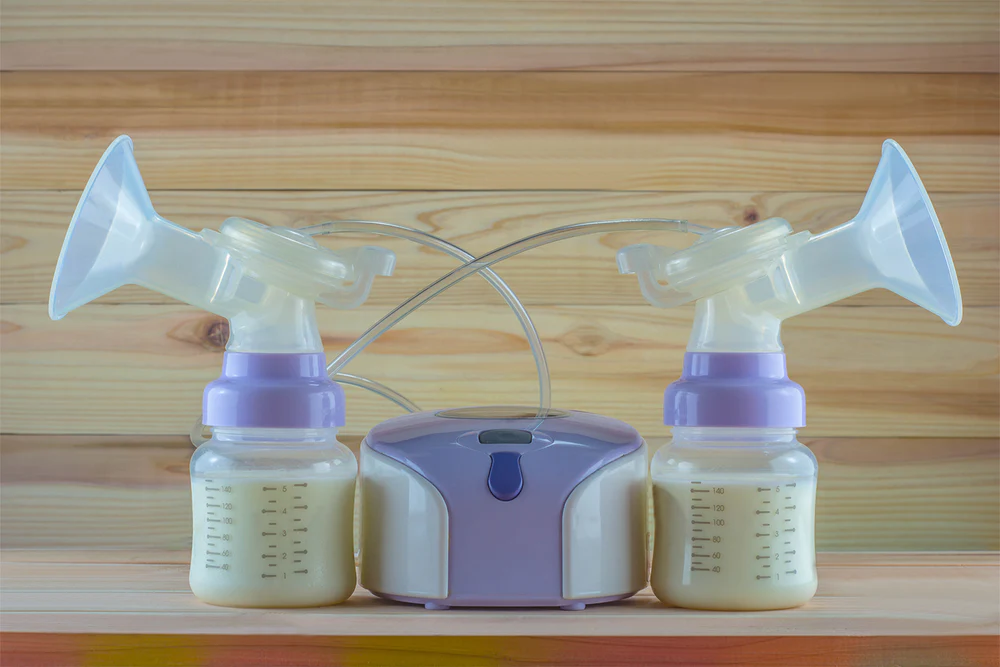Pregnancy is a beautiful, wild ride full of surprises—some of them not so glamorous. One day, it’s all glowing skin and cute bump photos, and the next, you’re dealing with stretch marks and ankles that have disappeared somewhere in all that swelling. But here’s the thing: a little self-care goes a long way in keeping you feeling like yourself through all the changes.
It’s completely normal to have concerns about stretch marks, swelling, and all those unexpected pregnancy curveballs. The good news? With a few simple self-care tips, you can keep these worries in check. Whether it’s adding a soothing stretch mark routine to your day or rocking some compression socks for those tired feet, these small steps can help you feel more comfortable and confident as you navigate this amazing time. Because while your body does its incredible work, you deserve to feel great, too.
What Causes Stretch Marks in Pregnancy?
We’ve all seen those perfect, smooth baby bumps on social media, in ads, and on magazine covers, and it’s easy to compare our own skin to those airbrushed images. But the reality? Most pregnancies come with stretch marks, and that’s perfectly normal. It’s okay not to love every change your body goes through—especially when those changes feel unexpected or different from what you imagined.
Stretch marks may be a common part of pregnancy, showing up as your skin works overtime to keep up with your growing baby. When your body expands faster than your skin can handle, the collagen and elastin fibers underneath can tear, leading to those familiar red or purple streaks that eventually fade to lighter lines.
Most women develop stretch marks on the belly, thighs, breasts, and sometimes hips, where your body is experiencing the most growth. It’s not just the stretching; pregnancy weight gain also contributes, putting added pressure on your skin.
Many times, stretch marks are simply a matter of genetics. If your mom, sister, or grandma had them, chances are you might too. There’s no magic remedy or secret trick to guarantee they won’t show up, and that’s not something to feel shame or embarrassment about. While we can’t always control how our skin responds, there are ways to minimize their appearance and support your skin’s health along the way. The important thing is to give yourself grace—your body is doing something incredible, and it deserves a little extra love, no matter what shows up along the way.
How to Prevent Stretch Marks During Pregnancy
While there’s no guaranteed way to completely avoid stretch marks, there are plenty of ways to help keep your skin feeling strong, hydrated, and supported. Think of it as giving your skin a little extra love to handle all the stretching it’s doing. Here are some tips that can make a real difference:
- Hydrate from the Inside Out: Staying hydrated is one of the simplest things you can do to support your skin. Drinking plenty of water helps keep your skin cells plump and elastic, making them better equipped to handle all that stretching. Plus, it’s great for overall health, so it’s a win-win.
- Moisturize Daily: A good moisturizer can be your best friend during pregnancy. Keeping your skin hydrated on the outside is just as important as hydrating from within. Look for creams and oils specifically designed for stretch marks, like those containing cocoa butter, shea butter, or almond oil. They work to lock in moisture and improve the skin’s elasticity, making it more resilient.
- Support Skin Elasticity with Skincare Products: There’s a whole world of skincare out there that’s made to help support your skin as it stretches. Stretch mark creams and natural oils, like rosehip and jojoba oil, are popular for a reason—they’re packed with vitamins and antioxidants that nourish the skin and help it bounce back. Applying these products consistently, especially on areas like your belly, thighs, and breasts, can help prevent stretch marks make a noticeable difference.
- Nourish Your Body with a Healthy Diet: What you eat plays a big role in how your skin looks and feels. Foods rich in vitamins C and E, zinc, and healthy fats can all support skin health and elasticity. Think berries, nuts, avocados, and salmon—they’re as good for your skin as they are tasty!
These tips can’t promise a stretch mark-free pregnancy, but they can help keep your skin feeling softer, smoother, and more comfortable. Your body is doing incredible things, and with a little daily TLC, your skin can feel just as amazing. Don’t forget, always consult your doctor when looking to add new products and foods into your routine.
Stretch Mark Prevention Products and Solutions
When it comes to preventing stretch marks, the right products can be game-changers. It’s not just about picking something off the shelf; it’s about choosing products with ingredients that truly nourish, hydrate, and support your skin through all its changes. Here are some standout options that can help keep your skin feeling strong and supple:
- Vitamin E Creams: Known for its antioxidant properties, vitamin E may help improve skin elasticity and may reduce the appearance of stretch marks. Creams rich in vitamin E work by deeply moisturizing and protecting the skin, making them a great addition to any skincare routine during pregnancy.
- Collagen-Boosting Lotions: Collagen is the magic ingredient that keeps skin firm and stretchy. Look for lotions that specifically boost collagen production—these may help your skin stay resilient as it stretches. Products with peptides and hyaluronic acid are especially effective for maintaining that much-needed elasticity.
- Natural Ingredients Like Shea Butter and Coconut Oil: Sometimes, simplicity is key. Natural options like shea butter and coconut oil are fantastic for deeply hydrating and nourishing the skin. Shea butter is packed with vitamins A and E, while coconut oil helps to soothe and soften, making them both fantastic choices for daily use.
- Mommy Care Kit Support Products: Beyond lotions and oils, the right support can do wonders for your skin. The Mommy Care Kit offers practical solutions that work from the outside in:
- Abdominal/Low Back Support: Designed to relieve abdominal and low back pain, this support band promotes better posture and stability, helping reduce strain on your body as it grows. By easing pressure on your muscles and nerves, it helps you move comfortably and confidently, giving your skin a better chance to stretch evenly.
- 3-in-1 Postpartum Binder: This versatile binder supports your growing bump during pregnancy, providing gentle compression that alleviates pressure on your skin. By supporting your belly, it helps minimize the occurrence of stretch marks, while also offering postpartum benefits like hip support and back relief during breastfeeding.
- Abdominal/Low Back Support: Designed to relieve abdominal and low back pain, this support band promotes better posture and stability, helping reduce strain on your body as it grows. By easing pressure on your muscles and nerves, it helps you move comfortably and confidently, giving your skin a better chance to stretch evenly.
Choosing the right stretch mark prevention products is all about finding what feels right for you and your skin. With a little bit of daily care and the right support, you can nurture your body through every stage, embracing all the changes that come along the way. If you have questions, always consult your doctor for support!
The Benefits of Compression Socks During Pregnancy
Compression socks might not be the first thing that comes to mind when thinking about pregnancy self-care, but they’re a true unsung hero when it comes to keeping you comfortable. These snug-fitting socks are more than just an accessory—they’re a powerful tool that supports your body in ways you might not expect.
During pregnancy, swelling (especially in the legs and feet) is incredibly common, thanks to increased blood volume and the pressure of your growing baby. Compression socks help by gently squeezing your legs to improve blood flow, reducing swelling, and keeping that circulation moving. This not only helps your feet and ankles feel less puffy but also brings much-needed relief after a long day on your feet.
Beyond the immediate comfort, compression socks play a key role in preventing varicose veins, which can develop during pregnancy due to increased pressure on your veins. The gentle pressure helps your blood flow back up toward your heart instead of pooling in your legs, which means less swelling and less discomfort overall. The result? Reduced swelling, better circulation, and a lot less discomfort.
At the end of the day, it’s all about staying comfortable and feeling supported, and compression socks are a simple way to do just that. Whether you’re running errands, working on your feet, or just trying to keep the swelling at bay, these socks are a practical addition to your self-care routine, helping you stay comfortable through all the ups and downs of pregnancy.
When to Start Wearing Compression Socks
Wondering when to slip on those compression socks? The truth is, you don’t have to wait until swelling becomes an issue to start reaping the benefits. Many women find it helpful to start wearing compression socks as early as the second trimester, when the extra blood flow and pressure on your veins start to pick up. However, there’s no wrong time to begin—if you’re already experiencing swelling or discomfort earlier on, it’s perfectly okay to start sooner.
It’s best to wear them consistently throughout your pregnancy, especially on days when you’re on your feet a lot or traveling. For the best results, put them on first thing in the morning, when your legs are still fresh, and wear them throughout the day. Compression socks can be worn daily and should be a part of your routine as long as they’re providing relief. And don’t pack them away once the baby arrives—they can continue to help during the postpartum period when circulation is still adjusting.
Sticking with compression socks can be a simple yet effective way to manage the everyday challenges of pregnancy, helping you feel more comfortable from trimester to trimester. The key is consistency; keep them on as long as your legs need the extra love, and you’ll feel the difference.
Other Self-Care Tips for Pregnant Women
Pregnancy is a time when self-care goes beyond just taking care of your body—it’s about nurturing your mind and spirit as well. It’s easy to get caught up in all the physical changes, but making space for your mental and emotional well-being is just as important. Here are some gentle, yet impactful self-care practices that can help you feel balanced and supported during this incredible chapter of your life:
- Prenatal Yoga and Gentle Movement: Movement is a beautiful way to connect with your body and baby. Prenatal yoga, for instance, can help relieve tension, improve flexibility, and keep you centered. It’s not about pushing limits; it’s about honoring where your body is each day and moving in a way that feels good. Even a short, gentle stretch or walk can lift your mood and keep your body feeling strong and flexible.
- Stay Hydrated: It sounds simple, but staying hydrated is one of the best things you can do for yourself. Water supports everything from healthy circulation to skin elasticity and can help manage common pregnancy symptoms like swelling and headaches. Keep a water bottle nearby, and take sips throughout the day—it’s a small habit that makes a big difference.
- Prioritize Rest: Your body is working harder than ever, and rest is essential. Allow yourself to slow down when needed and don’t underestimate the power of a good nap. Creating a calming bedtime routine can also help you wind down and get better sleep at night, which is crucial as your body navigates the demands of pregnancy.
- Mind Your Mental and Emotional Wellness: Pregnancy is as much an emotional journey as it is a physical one. Taking time for yourself—whether it’s through journaling, meditating, or simply enjoying a quiet moment—can help keep your mind at ease. Surround yourself with supportive people, and don’t hesitate to seek out a little extra help or speak up when you need it. Your emotional health is just as important as your physical health.
Caring for yourself during pregnancy isn’t about perfection; it’s about tuning in to what you need each day and giving yourself permission to rest, reset, and recharge. Remember, self-care is not a luxury—it’s a necessity, and you deserve every moment of it.
Postpartum Care: Managing Stretch Marks After Pregnancy
After giving birth, your body has been through so much, and it’s normal for stretch marks to remain as a testament to the incredible work your body has done. That said, it’s also completely valid to seek out treatments if it helps you feel more confident and comfortable in your own skin. It’s all about doing what makes you feel good, not what anyone else expects.
- Postpartum Creams and Oils: If you’re considering creams and oils to support your skin, it’s always a good idea to consult with your doctor or dermatologist, especially if you’re breastfeeding. Many over-the-counter creams contain ingredients like retinoids, vitamin C, hyaluronic acid, and peptides that can help improve skin texture and boost collagen. However, some ingredients may not be recommended while breastfeeding, so it’s important to choose products that are safe for both you and your baby. Natural options, like rosehip oil and shea butter, are generally gentler and provide deep hydration, but always check with your healthcare provider to ensure they’re suitable for your needs. Taking this extra step ensures that your skin care is both effective and safe during this special time.
- Laser Therapy: For those interested in more targeted options, laser therapy can be a powerful tool to reduce the appearance of stretch marks. By stimulating collagen and elastin production, laser treatments help fade marks and improve skin texture. If this feels right for you, consulting with a dermatologist can provide insights into the best approach for your skin type.
- Microneedling: Microneedling is another treatment that can help refine the appearance of stretch marks by encouraging new collagen growth. It’s a minimally invasive option that can enhance skin texture and tone, with results often noticeable after a few sessions.
- Your Choice: At the end of the day, the choice is yours. There’s no need to change your body for anyone, but there’s also no shame in wanting to explore treatments if they help you feel empowered and confident. Whether you embrace your stretch marks as a natural part of your story or choose to seek treatments to soften their appearance, the most important thing is how you feel about yourself.
Whether you stick with simple self-care or opt for professional treatments, honor your journey and do what feels best for you.
Conclusion
Self-care during pregnancy and after childbirth is all about looking after your well-being in ways that feel right for you. Whether it’s using compression socks to reduce swelling, incorporating stretch mark prevention into your routine, or simply taking moments to rest, each act of care helps you navigate the changes your body is going through.
A holistic approach means tuning into your physical, mental, and emotional needs. It’s about being mindful and practical—using the right tools to make you feel more at ease and addressing the common discomforts that come with pregnancy and postpartum. From supportive products to thoughtful skincare choices, these steps are here to help make your journey smoother.
The most important thing is finding what works best for you. There’s no perfect way, just the way that feels right. Listen to your body, give yourself the care you need, and remember that taking time for yourself is not just helpful—it’s something you truly deserve.












